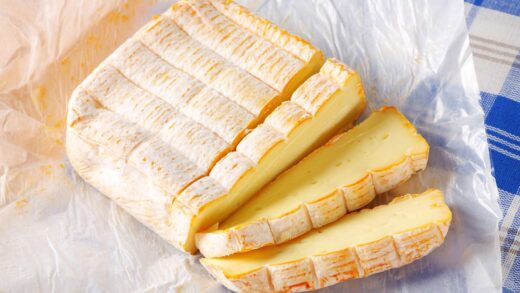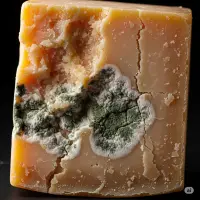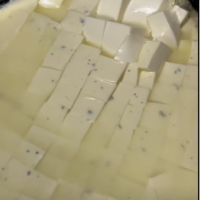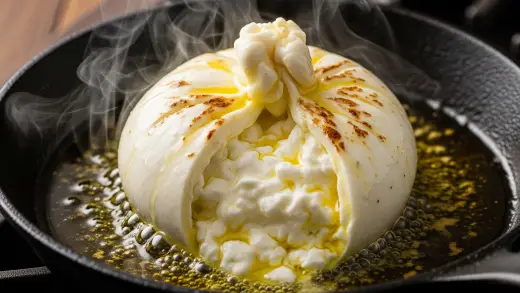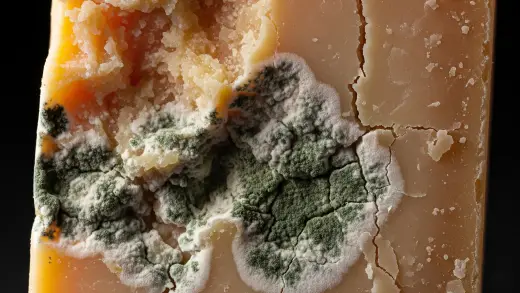Manchego cheese, a delicious and versatile Spanish cheese, can be found in a variety of places, both in physical stores and online.
Imagine a cheese that’s like a nutty, buttery dream, with a little hint of caramel and a firm, crumbly texture that just melts in your mouth.
That’s Manchego! This amazing cheese comes from a special place called La Mancha in Spain, the same place where Don Quixote, the famous fictional knight, roamed.
Because it’s so special, Manchego has a “Protected Designation of Origin” (PDO) label, which means it can only be made in that specific region with milk from Manchega sheep.
If you’re eager to try this Spanish treasure, you might be wondering, “Where can I find Manchego?”
Well, you’re in luck! Whether you prefer the convenience of shopping online or the joy of browsing in person, there are plenty of places to discover this delicious cheese.
This blog post is your friendly guide to finding the perfect Manchego for your next snack, party, or culinary adventure.
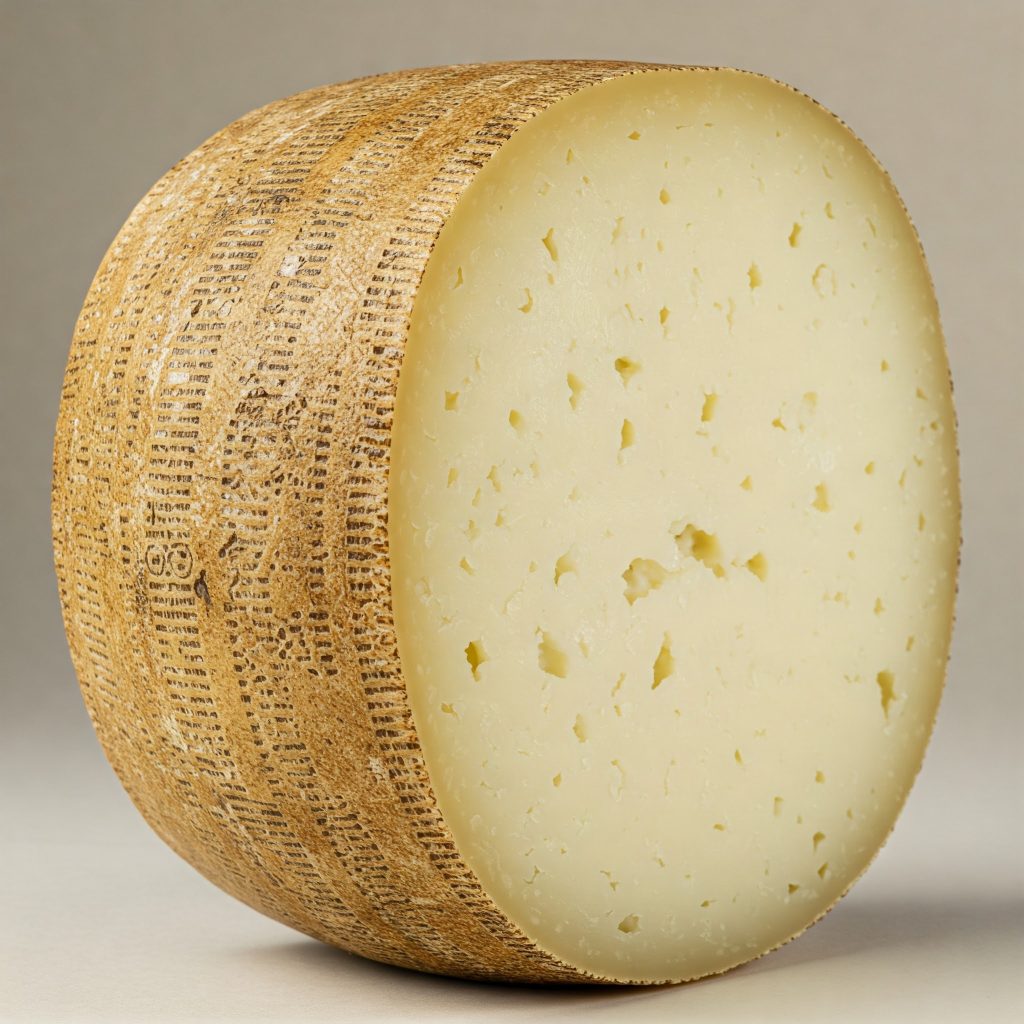
Where to Buy Manchego Cheese?
Manchego cheese, a delicious Spanish sheep’s milk cheese, is available from various sources, both online and in physical stores. Here’s a breakdown of where you can typically find it:
Online Retailers
Offers a wide variety of Manchego cheeses from different brands and sellers.
Websites specializing in gourmet foods often have a selection of high-quality Manchego. For example Gourmetfoodstore.com.
Another online retailer that sells various types of Manchego and other specialty cheeses. Markys.com.
This is a good source for authentic spanish foods, including many varieties of Manchego. Brindisa.com.
This site also specializes in spanish foods, and has a selection of Manchego.
Physical Stores
Specialty Cheese Shops and Delis:
Local cheese shops and delis often carry a selection of imported cheeses, including Manchego.
Supermarkets:
Many larger supermarkets, especially those with a well-stocked deli or cheese section, will carry Manchego.
Farmers’ Markets:
Occasionally, you may find Manchego at farmers’ markets, particularly those that feature local cheesemakers or vendors specializing in imported foods.
When purchasing Manchego, look for the “Denominación de Origen Protegida” (D.O.P.) label, which ensures that the cheese is authentic and produced in the La Mancha region of Spain.
Understanding Manchego Cheese Quality
Let’s talk about understanding Manchego cheese quality, tailored directly to you:
Significance and Guarantees
When you see the D.O.P. (Denominación de Origen Protegida) label, it’s your assurance of authenticity.
It tells you that the Manchego you’re buying is genuinely made from Manchega sheep’s milk, produced in Spain’s La Mancha region, and following traditional methods.
Essentially, it’s your guarantee of a quality product with specific characteristics.
How To Identify It
You’ll typically find the D.O.P. label as a small, oval-shaped sticker with “Denominación de Origen Protegida” and the La Mancha region logo.
Look on the back of the package. If you see this label, you know you are buying true Manchego.
Types of Manchego: And What They Mean For Your Tastebuds
When it comes to Manchego cheese, age truly matters. This isn’t just about how long it’s been on the shelf; it’s about a fascinating transformation that directly impacts the flavors and textures you’ll experience.
So, let’s delve into the world of Manchego and explore how time crafts its distinct character.
Semi-Curado (Semi-Aged)
If you prefer a mild, fruity, and slightly nutty taste, go for this one. It’s aged for 3 months.
Curado (Aged)
If you like a more intense, nutty, and slightly sharp flavor, choose this. It’s aged for 6 months.
Viejo (Old)
For a robust, complex experience with caramel, spice, and a piquant finish, this is your choice. It’s aged for 12 months or more.
Texture and Flavor Differences
Younger Manchego (Semi-Curado) will give you a softer, creamier texture and a delicate flavor.
As it ages, you’ll notice it becomes firmer, drier, and more crumbly, with a more intense and complex flavor.
The oldest cheeses will have a very firm almost crystalline texture, which is a wonderful sensation.
What To Look For When You Buy Manchego cheese?
So, you’re looking for Manchego cheese? Great choice! But how do you pick a good one? It’s not just about grabbing any piece. You want the best taste, right? Let’s talk about what you should look for when you buy Manchego.
Texture
When you handle it, high-quality Manchego should feel firm and compact.
You might see small, evenly distributed holes.
Avoid any cheese that looks too dry, cracked, or oily.
Aroma
It should have a pleasant, nutty, and slightly tangy smell.
Older Manchego will have a stronger, more complex aroma.
If it smells sour or off, don’t buy it.
Appearance
The rind should look natural, with a zigzag pattern from the traditional molds.
The inside should be a consistent ivory or pale yellow.
Make sure it’s free from mold or blemishes.
High-Quality Indicators
The D.O.P. label is your best friend here.
Look for that natural rind and firm texture.
A rich, nutty aroma and complex flavor are the signs you’ve found good Manchego.
Purchase from reputable cheese shops, or delis, where you can ask questions and get recommendations.
Tips for Buying Manchego Cheese
So, you’re almost a Manchego master. Before you click “buy” or head to the checkout, here are some handy tips to make sure you get the best cheese possible.
Understanding PDO
That little “PDO” label? It’s a big deal! It means your Manchego is the real deal, made in La Mancha, Spain, with milk from Manchega sheep. It’s like a stamp of authenticity.
Always keep an eye out for that PDO label. It’s your guarantee of quality.
Checking the Age
Manchego comes in different ages, and each one has its own unique taste:
- Semi-curado: This is the young one, with a mild, fruity flavor.
- Curado: This is the middle-aged Manchego, a bit firmer and nuttier.
- Viejo: This is the old one, aged for a long time, with a strong, intense, and almost spicy flavor.
Think about what kind of taste you like. If you want something mild, go for semi-curado. If you want something bold, viejo is your choice.
Storage and Serving
To keep your Manchego fresh, wrap it in parchment paper or cheese paper and store it in the fridge.
When you’re ready to eat it, let it sit at room temperature for about 30 minutes. This will bring out its full flavor.
Manchego is wonderful by itself, or with some crusty bread, olives, or a drizzle of honey. It also pairs well with a glass of Spanish wine.
Conclusion
So, there you have it! Whether you’re hitting up your local cheese shop, browsing the gourmet aisles, or clicking through online stores, delicious Manchego is within reach. Remember to look for the PDO label, pick the perfect age, and get ready to enjoy a taste of Spain.
Don’t be shy about exploring different options to discover your favorite! And hey, if you’ve got a Manchego story or a favorite way to enjoy it, share it! We’d love to hear about your cheesy adventures.


